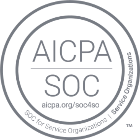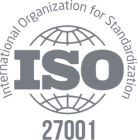Companies investing in positive workplace culture have 12% more productive employees, stats show.
And this is just one of the positive effects of thriving work cultures on ROI.
But how do you measure those effects?
… As an HR leader facing the challenge of demonstrating the financial impact of your initiatives for boosting employee engagement and strengthening the company culture to the C-suite.
And this is exactly what you’ll learn in today’s blog post:
- From how the value of a positive workplace impacts KPIs like employee productivity, team dynamics, and turnover
- To the practical steps you’ll need to take for measuring culture workplace ROI
- To the most effective approach for proving the financial impact of your office culture initiatives to the C-suite in your organization
Let’s dive right in…
Tl;DR:
- Quantifying the ROI of a positive workplace culture is crucial for HR leaders to demonstrate the financial impact of their initiatives.
- Steps include measuring people data, benchmarking against industry standards, comparing attrition costs, and linking culture to customer satisfaction.
- A positive workplace culture enhances productivity, reduces turnover costs, boosts customer satisfaction, and fosters innovation.
- Challenges include building connections in dispersed workforces, coping with productivity pressures, integrating new tech, and maintaining a shared purpose.
What Is a Workplace Culture and Why It’s Important?
“Company culture is what employees live and breathe every day in the workplace.” – Mike Zani
Or, better said, a workplace culture is:
“The way we do things around here” - Marvin Bower.
You’ll find many valid answers to the question: “What is a workplace culture?”
But trying to narrow them down to just one, straightforward definition of culture in the workplace, we can say that:
Workplace culture is what makes an organization unique: its set of shared values, beliefs, practices, behaviors, and interactions.
It’s its personality if you wish.
And speaking of shared practices and behaviors, here are a few examples of workplace culture that’ll help you better grasp its definition:
- A workplace culture that’s centered around collaboration between employees and solving problems as a team
- An outcome-driven workplace culture where the need to compete and win is highly encouraged
- A workplace culture with clearly defined policies and procedures and clear lines of accountability
- A toxic workplace culture where negative behaviors and attitudes are the dominant ones, affecting employees’ well-being and productivity
But why is culture important in the workplace?
Because it influences, significantly, the organization’s overall functioning, performance, and… success.
This shared identity and sense of predictability that a (positive) workplace culture offers to an organization’s employees influences, massively, how they think and work.
Which ultimately gets reflected in:
- The retention level
- The ease at which a company recruits the best talents in its niche
- The customer experience itself
For a healthy workplace culture – where employees are more engaged and happier – translates to better interactions with the customers.
And that’s where the importance of workplace culture lies.

The Value of a Positive Workplace Culture
And yes, we can talk about business value.
… About business benefits – increased job satisfaction, increased productivity – that the healthy and thriving culture of a workplace can bring.
Which all derive from the employees working in such an environment:
When employees feel that their needs and values match those of the organization they work for, they feel good about coming to work each day.
They get on well with their colleagues and are more engaged and more productive.
Now, let’s get back to those “business benefits” that positive work cultures can bring and focus on the most valuable ones:
Boosting Employee Productivity and Efficiency
Studies on the impact of the workplace environment on employees’ performance have shown that a positive office culture improves employees’:
- commitment level
- ability to achieve set goals
- overall performance
How? It’s simple:
A positive workplace culture promotes teamwork, open communication, and collaboration between employees.
With employees feeling comfortable and encouraged to ask for and give constructive feedback and share their ideas, their performance levels tend to increase.
“Teamwork is the secret that makes common people achieve uncommon results.” ― Ifeanyi
Reducing Turnover and Recruitment Costs
People working in a work environment where they feel appreciated by their managers and co-workers – where they feel that they’re doing meaningful work – are less likely to present turnover intentions.
In other words, when employees connect with the culture in the office, they tend to stay.
Which leads to higher retention rates and lower recruitment costs.
Enhancing Customer Satisfaction and Loyalty
When comparing companies that score a high employee engagement to those scoring a lower one, Gallup, the analytics company, discovered a 10% difference in customer loyalty between the two categories.
Because happier, more engaged, and empowered employees will be more responsive to the customers’ needs. More empathetic.
And more driven to take ownership and deliver on their commitments.
More passionate about impressing the customers and resolving customer issues efficiently.
Strengthening Team Cohesion and Collaboration
“Collaboration allows us to know more than we are capable of knowing alone.” ― Paul Solarz
Research shows that organizational culture influences team dynamics – communication, trust, and conflict resolution – to a great extent.
That it influences employees’ level of trust, the effectiveness of their conflict resolution strategies, and their level of openness. And inclusivity.
And with team members being able to communicate better, and more inclined to prevent conflicts from escalating, their ability to connect and do collaborative teamwork increases.
Minimizing Absenteeism and Workplace Conflicts
The same above-mentioned Gallup study has proven that companies with higher employee engagement levels – a result of a healthy workplace culture – have 81% lower absenteeism rate.
A research result that translates like this:
Company fostering workplace cultures that
-
promote communication
-
prioritize employee well-being and work-life balance
-
support their initiatives
-
Make them feel valued and heard
… score higher overall job satisfaction. And, subsequently, lower absenteeism rates.
Leveraging Employee Potential and Creativity
Employees with higher levels of psychological capital, social capital, and workplace well-being are more capable of reaching their full potential.
More specifically, 67% of US workers believe workplace culture has a strong impact on their level of innovation and creativity.
In other words, an office culture where employees are encouraged to take risks, experiment, and express new ideas, leads to process improvements and…. innovation.

Key Challenges in Building Strong Workplace Culture
Now that you have:
- a clear(er) culture in the workplace definition
- a better understanding of the business importance of workplace culture
… it’s time you gained a clear picture of the challenges of building one, as well.
Here are the 4 main ones:
Building Connections in a Dispersed Workforce
One of the ways to build a strong and healthy workplace culture is through shared experiences.
But in the context of a globally distributed and fragmented workplace, establishing and (most of all) maintaining strong, meaningful personal connections among employees becomes a true challenge.
With fewer in-person activities, shared learning seminars, collaborative brainstorming sessions, and water cooler conversations.
Coping with a Strong(er) Pressure for Productivity
Research has shown that 50% of senior leaders consider it the biggest challenge they face when striving to create a positive workplace culture.
Setting the right shared values and acting according to them becomes particularly difficult when you’re forced to deal with increasingly strong pressure to boost productivity.
Integrating New Tech
Or, better said: the challenge of embracing digital transformation and innovation in your company without compromising employees’ happiness and productivity.
The true challenge here is building a workplace culture that encourages continuous learning, adaptability, and employee well-being to the same extent.
Maintaining a Shared Purpose
Keeping a remote workforce aligned with the company’s values and mission is a true challenge.
Since you no longer have those physical cues of the office space – like daily, face-to-face interactions or the office decor itself – that keep employees connected to the organization’s goals.
Measuring Workplace Culture ROI: 7 Practical Steps
While everyone agrees that a positive workplace culture influences employees’ levels of engagement and their overall performance, most leaders don’t know the actual ROI of investing in culture and engagement initiatives.
As the culture within the workplace is that “nice to have”, yet too intangible to measure aspect in a company.
Not necessarily...
Not if you take the right steps to measure and prove the financial impact of a positive workplace culture.
Your culture is so much more than your vision and mission statements. It’s the shared experience of the entire workforce—and it’s a force that drives financial results.
So, let’s see exactly how you can measure it…
Benchmark Your Company Culture Against Industry Standards
This will provide context to the financial performance of the workplace culture you’ve struggled to build.
And it will help you identify strengths and weaknesses in your cultural initiatives. And measure the progress.
Measure it and include it in your strong case for gaining investment from the C-suite.
Leverage Advanced Workplace Analytics Tools
Collecting data is crucial for proving how the workplace culture in your organization has a positive ROI.
But how do you collect that workplace data?
YAROOMS is the workplace experience platform that provides you with a whole set of advanced workplace analytics – people data, employee satisfaction data, office utilization data – you need to measure progress.
And to back up with solid data the ROI business case for your initiatives to improve company culture.
From:
- the no. of no-shows
- to the average space utilization
- to how many people have been at the office on particular days
- to data on employees’ general happiness level
… it’s the workplace analytics tool you’ll want to rely on to get those data-backed insights to include in your presentation to the executives in your organization.
Assess the Cost of Culture-Driven Turnover
Another step to take when trying to calculate the ROI of the positive workplace culture in your organization is to calculate the costs of employee turnover.
As a consequence of a bad company culture.
Include the financial impact of:
- Hiring
- Onboarding
- Reduced productivity during the hiring and onboarding process
- A bad reputation
Once you have all these costs at hand, compare them to those of building and maintaining a healthy workplace culture. One aimed at improving retention.
And show the savings the organization could miss out on.
Quantify Training and Development Impact
You’ll also want to include the costs of training and investing in new employees’ development in your business case for investing in workplace culture.
As these types of costs are a tangible consequence of a bad company culture leading to a high turnover rate.
Explore How Cultural Factors Boost Customer Satisfaction and Profitability
Probably the most heavy-weighing argument that a strong company culture has a significant financial impact is that of the higher level of customer satisfaction.
That’s why you’ll want to highlight the intrinsic link between an organization’s culture – that aligns with the values and expectations of its customers – and the level of customer satisfaction and loyalty.
For when customers perceive a cultural synergy between them and the companies whose services or products they use, their satisfaction and commitment to these companies increase.
Collaborate with the Finance Team
No need to fight this “battle” alone.
Team up with the finance department in your organization and ask for all the assistance you can get for:
- analyzing the data you’ve collected
- turning it into compelling insights presented in a way that aligns to those key metrics that the C-suite resonates with
- .. and in a financial language they’re most familiar with
Review Financial Metrics before and after Cultural Initiatives
A before-and-after report is the most compelling tactic you can adopt when trying to demonstrate a positive ROI for your cultural initiatives within the company.
Present a comparative analysis of the key financial metrics before and after your specific actions aimed at improving the company culture.

How to Showcase the Financial Benefits of Culture Initiatives to the C-Suite
You have all your people's data and insights proving the ROI of your efforts to establish a stronger culture within the workplace.
But how do you present them to the leaders in your company?
How do you put it together in a compelling ROI business case?
First of all, you’ll want to shift your approach from convincing them that a positive workplace culture has an ROI to proving to them how exactly it has an ROI.
All while you’re helping them understand the X-times returns on their investment in your cultural initiatives.
Next, you’ll want to show them real examples of good company culture that correlate with cost savings due to their improved retention rates.
Showcase these results at a macro level, first, then at a micro level:
Put them in your organizational context and let the C-suite know the exact sum you want to invest and the return you expect to get on that investment.
And the most powerful approach you can adopt to showcase the financial benefits of the positive workplace culture in your organization is A/B testing:
Do a split test of your cultural initiatives and “use” the control group in the company to prove the financial impact you’ll generate.
Present the leaders with the specific initiatives to improve the workplace culture that you’ve implemented.
And the specific percentage point in employee performance level or customer satisfaction level that those initiatives have resulted in.
In the end, ask for the needed investment that’ll help you roll out your initiatives across the whole company.
Wrapping Up: Unlocking Workplace Culture’s Full Potential Through Data
The above-mentioned 7 steps of measuring the ROI of a positive workplace culture depend, all, on data analytics.
It’s the ongoing data collection, data analysis, and turning data into insights that will help you reach the full potential of a strong culture in your organization.
… A data-driven culture. One of continuous learning and improvement.
In short, the constant process of:
- measuring & analyzing people and workplace data
- adapting your initiatives to improve company culture to the insights you get
… is what will support the continuous improvement of your workplace culture.
One that’s data-fueled to achieve higher and higher ROI.


.png)




